Pinfish Traps Tips & Tricks
How To’s, Advice, Tips and Techniques for your live bait trap.
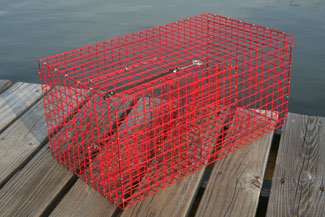
All of our designs work amazingly when these live bait fish trap tips and guidelines are followed. We have done all of the trial and error work and figured out how to get the best results in several different deployment applications.
Now it's your turn to prove to yourself just how easy it is by following some of the tips and advice below. Our traps are seriously one of the easiest, fastest, most economical ways for catching thousands of live baits year after year and time and time again. The investment in one of our models will save you hundreds, maybe even thousands of dollars by not needing to buy as much dead bait as you have in the past.
How nice would it be to not worry about buying tons of dead bait over the course of a year, which can really get expensive? Buying dead bait and finding a way to keep it frozen at home without the wife smelling it, or even worse, how do I haul all of that dead bait home without making the truck smell like a fish factory? Add up the time involved with going to the bait store every trip for frozen bait and wondering if it is fresh, will they have it, will the person at the bait store oversleep and waste more of my morning and you will see how much time and how much easier it is to do it yourself.
For all live baits such as pinfish, spot, porgy, sea bass, squirrel fish, grunts, croaker, perch and more, our live bait fish traps will do the trick very easily and effectively. All live baits just mentioned are very aggressive baits and do not waste any time going into any one of our designs.
After you've selected which live bait trap will suit your needs, your next step will be the location in which to place your pinfish traps. The most common live baits we'll be going after are Pinfish, Spots, and Squirrel Fish. Ideally, you'll want to place your live bait fish trap in proven areas that you've caught several by hook or have seen in large quantities schooled up. In most cases you'll be placing your live bait trap in water that is between 4 and 12 feet in depth. If you are unsure of where to deploy your live bait trap, here are some pointers to help with identifying where your targeted bait may live.
- For pinfish, look for the thickest grass beds with slight to medium current movement and deploy the trap on a sandy spot surrounded by the grass. If you see a large school of pinfish flashing in the sunlight while looking for a spot to deploy the trap, this would be a great place to deploy trap. If you know of any great trout flats, this is also where pinfish gather in large schools. Trout and pinfish use the same grass environment for feeding purposes, so putting traps where trout have gathered have always proven very productive. Additionally, deploying your trap around bridge pilings, structure and boat docks will produce good catches of pinfish.
- Spots are in the same Pinfish family but are more rounded in shape, mostly all silver and have a few black spots at the end of their tail. Spots generally like the live bottom or rocky areas and usually gather up in very large schools. Spots when schooled up are most often considered a major nuisance when trying to fish with smaller baits like shrimp. On the other hand, when found the opportunity to find such large schools, write down the GPS coordinates or landmark for you've just found yourself a live bait gold mine. Spots tend to take up home in water depths of 10-35 feet on specific rocky points, live bottom, and structure. Catching hundreds at one time of these prime looked for baits in these locations using the Commercial model trap is very likely.
- Squirrel fish can be found in water up to 25 feet in depth but like the sandy bottoms with patches of grass in the area. The best way to target Squirrel fish is to place the trap in areas that you've caught by hook or simply test the trap in areas of patchy sand and grass in water depths of 7-12 feet. Squirrel fish will not be seen in dense populations like Pinfish or Spots. Squirrel fish tend to be much more independent so catching large numbers of just Squirrel fish would be highly unlikely. One could expect an average of 6-15 squirrel fish at a time in the right areas.

Baiting any one of our trap designs is one of the most important tips that is most often forgotten. The #1 choice for catching live baits that we have found is the more raw fish that is used, the better the results. Filling the trap up with an average of 2-5 pounds of dead bait will always increase your quantity of live bait catches. We recommend several whole Mullet cut up, left over old bait that you didn't use, cut in half Cigar Minnows, Sardines, Menhaden or Boston Mackerel or fish carcasses from cleaning the previous days catch.
The more fish oils and scent that come out of the trap and is released into the water, the better. Fish have an unbelievable sense of smell and the stronger that the bait scent is in the water, the farther the scent will travel, bringing large schools from other areas right into your trap. Additional methods that have proven effective include using cans of Jack Mackerel bought at your local grocery store or cans of cat food that contain high levels of fish oils. For this application, use an old fashioned can opener and use the pointed side of the opener to make as many holes in the top and bottom of the cans as possible.

When deploying your live bait trap, sink the long part of the baitfish trap in the direction of current flow. Live bait will enter the trap much easier swimming up or down current instead of entering the live bait trap in a side current. Weight the traps for locations that have abnormally strong tidal movement with the same lead bars that are used to put into chum bags, chum pots, or use with weights for marker buoys or dive weights in 2-3 lb sizes too keep your live bait trap from tipping over and blocking the inlets into the trap body.
Helpful Hint:
Although you can catch live baits in a 2-3 hour period, it is recommended for maximum results, that it is left alone for at least a 12-24 hour period. As live bait enters the trap, more live baits learn how to enter and start entering fast. Checking your bait trap every few hours is not recommended because it disturbs the live bait fish traps environment and negatively impacts the quantity of the bait that will be trapped.
Caution:
When your live bait trap is first placed, it will take a while before most live baits become comfortable with it and begin to enter it. As the smell from the fish oils start to disperse around the place of deployment, the live baits get use to the live bait trap and they will soon start to enter.
Live baits that enter will instantly start to feed with no fear of being trapped. Once you start pulling the trap, the live baits instinct is to try and get out and become stressed. With this in mind, all live baits should be removed once the bait trap is pulled up to insure the trapped bait remains as healthy as possible. Only on exception should the trap be pulled to check or add bait to the trap.
A good example is when deploying a trap for an extended period of time to gather as much live bait as possible, the trap may be pulled to add more bait to attract additional bait or to add fresh dead shrimp to feed and strengthen the bait already caught. Feeding the bait already caught with fresh dead shrimp will help improve the health of the bait and help improve the chances of surviving the long day of fishing ahead. This process should be done quickly, and if at all possible the trap should be left in the water with just enough out of the water to open the lid on the top of the drop to drop in the additional dead bait.
Pulling a trap after just a few hours is one of the biggest mistakes made and can ruin the comfortable environment the live bait has been in where only eating has been on their mind and now the disruption has them trying to figure a way out.
Current Live Bait Trap Models
(Ask about custom sizes for your specific needs)
This is the perfect trap for the inshore angler who knows the benefits of having live bait as part of the arsenal. With the same trapping capabilities as the larger traps but with a smaller capacity the Inshore Model is a must have. Easy to store in most inshore skiffs and bay boats and it’s also easy to handle.
This trap is great for the weekend angler who may fish alone or with a partner and needs to have enough live bait for a day on the water chasing down their favorite inshore prey. This trap is the smallest of the bunch measuring in at 14” Long, 13” Wide and 11” High. Don’t be fooled by the size of this trap, it packs a punch and gets the job done!
This is the most common sized bait fish trap designed for commercial use or for the serious inshore, coastal and mid-shore fisherman where catching the most amount of live bait quickly (Two trap doors) and the ease of storage are the main concerns. This trap size is very easily stored on boats of both small and medium sized boats.
Traps up to 6 dozen Pinfish, Squirrel Fish, Spot, Perch, and Grunts for catching Trout, Redfish, Flounder, Black Drum, Snapper, Tarpon, Cobia, Spanish Mackerel, King Mackerel and many other species. Made from ½” by 1” galvanized “Aquamesh” welded wire and stainless steel components for corrosion resistance and durability.
Engineered for ease of use and maximum performance in a smaller trap size. Dimensions: 18” Long, 13” Wide and 11” High. Trap can be weighted for deployment in strong tidal and current applications with 2-3 lbs. of weight. Great trap for extended deployment times from 2-72 hours.
This Supersized trap was also designed for commercial use or for the serious fisherman who's looking to trap in excess of 100 pinfish, spot, porgy, squirrel fish, grunts, croakers and trap many other live baits. Catch an enormous amount of live baits because of its 4 trap door entry design.
It's designed to be able to place a trap in highly populated live bait areas to catch the maximum amount of live baits very quickly for targeting offshore species including Grouper, Snapper, Amberjack, King Mackerel, Tuna, Dolphin and Wahoo. This trap fills up FAST! The more entries, the faster bait enters and exits, therefore it is not recommended for deployment in the water beyond 48 hours. It is not uncommon to have 5 or 6 dozen pinfish in 1 hour time. Dimensions: 24” Long, 13” Wide and 11” High.
The biggest trap we make. If you are a hard core offshore angler who wants to “Blackout” the livewells for a day of live bait fishing for monster offshore species or you are a Tournament Angler that needs enough bait to get you through a tournament, this is the trap for you.
The uniquely designed bait container allows you to load several blocks of frozen chum or 10 pounds of more of you dead bait of choice. This trap features the four inlet design to fill the trap up fast and the inlets have cover doors that can be closed and keep the bait in once you have what you need. The bait compartment allows you to come back and feed your bait in an easy manner to keep them frisky and healthy.
This is the perfect model for those who need longer deployment times in the water and want to be able to control the number of inlets to meet specific quantities of live bait needs. Dimensions: 24” Long, 24” Wide and 23” High.
Bait:
Keep in mind that pinfish are scavengers and they’ll eat anything dead. My advice is to stop by your local seafood store and kindly ask if you can take some discarded seafood wastes off their hands. Don’t forget your five-gallon bucket. Before choosing which bait to use, take notice of the size mesh of the bait holder in the trap.
The larger the mesh size of the wire, the larger the bait should be. This will make it harder for the smaller fish to eat all your bait before your trap can catch enough pinfish. You can also freeze your own bait. Just keep the discarded fish parts from you last trip. Don’t pay for bait if you can help it, but if you have to, buy menhaden. Menhaden are cheap, smelly oily and work extremely well.
Trap Placement:
Where you place your traps will certainly affect the amount of bait you catch. Some fishermen will insist that grassy bottom is vital to catching pinfish. I disagree. I’ve caught just as many on mud and sand bottom, and next to oyster bars as I have on the grass flats. The bottom line is you need to place them where the pinfish are.
Find the fish by experimenting. Place your traps on different types of bottom, at different water depths and next to different types of structures. See what works best in your area. Keep in mind that an area that may have water on it at the time you place the trap may not have it all the time. Be aware of the tidal flow and place your traps in an area that’s constantly covered with water. Also ask around to local fishermen. Chances are they’ll know where the pinfish are.
Chute Size and Direction:
I’ve always wondered why two identical traps with identical bait, placed right next to each other will catch different amounts of pinfish. One trap may have fifty pinfish in it and the one right next to it has none. This has happened to me on more than one occasion.
I’ve found that the size of the opening of the trap’s chutes or their necks (where the fish enters the trap), can dramatically affect the amount of baitfish you collect. Our traps have already been researched and set to the best performance size, taking all the guess work and headaches out of it!

Another important step in placing your traps is to point the chutes in the direction of tidal flow. In other words, if the tidal flow is north and south, then place your traps with the chutes pointed north and south. I had a local crabber one time tell me that by placing his blue crab traps in this manner, he increased his catch. He recommended that I try it with my pinfish traps and as he predicted, I caught more pinfish.
I hope that this information helps and if you have any questions or need assistance with any of our products feel free to contact me, Richie, directly. Happy Hunting!
Richie Kopf
Founder
Catch Live Bait
www.catchlivebait.com
info@catchlivebait.com
 All of our designs work amazingly when these live bait fish trap tips and guidelines are followed. We have done all of the trial and error work and figured out how to get the best results in several different deployment applications.
All of our designs work amazingly when these live bait fish trap tips and guidelines are followed. We have done all of the trial and error work and figured out how to get the best results in several different deployment applications. 


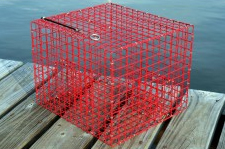 Inshore Model – [ View this trap ]
Inshore Model – [ View this trap ]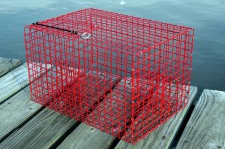 Offshore Model – [ View this trap ]
Offshore Model – [ View this trap ]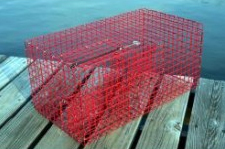 Commercial Model – [ View this trap ]
Commercial Model – [ View this trap ]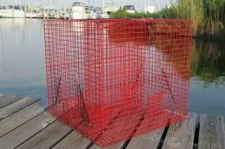 Tournament Model – [ View this trap ]
Tournament Model – [ View this trap ] Another important step in placing your traps is to point the chutes in the direction of tidal flow. In other words, if the tidal flow is north and south, then place your traps with the chutes pointed north and south. I had a local crabber one time tell me that by placing his blue crab traps in this manner, he increased his catch. He recommended that I try it with my pinfish traps and as he predicted, I caught more pinfish.
Another important step in placing your traps is to point the chutes in the direction of tidal flow. In other words, if the tidal flow is north and south, then place your traps with the chutes pointed north and south. I had a local crabber one time tell me that by placing his blue crab traps in this manner, he increased his catch. He recommended that I try it with my pinfish traps and as he predicted, I caught more pinfish.